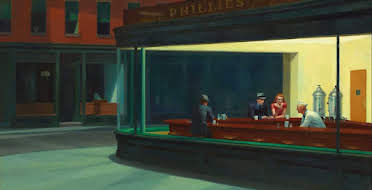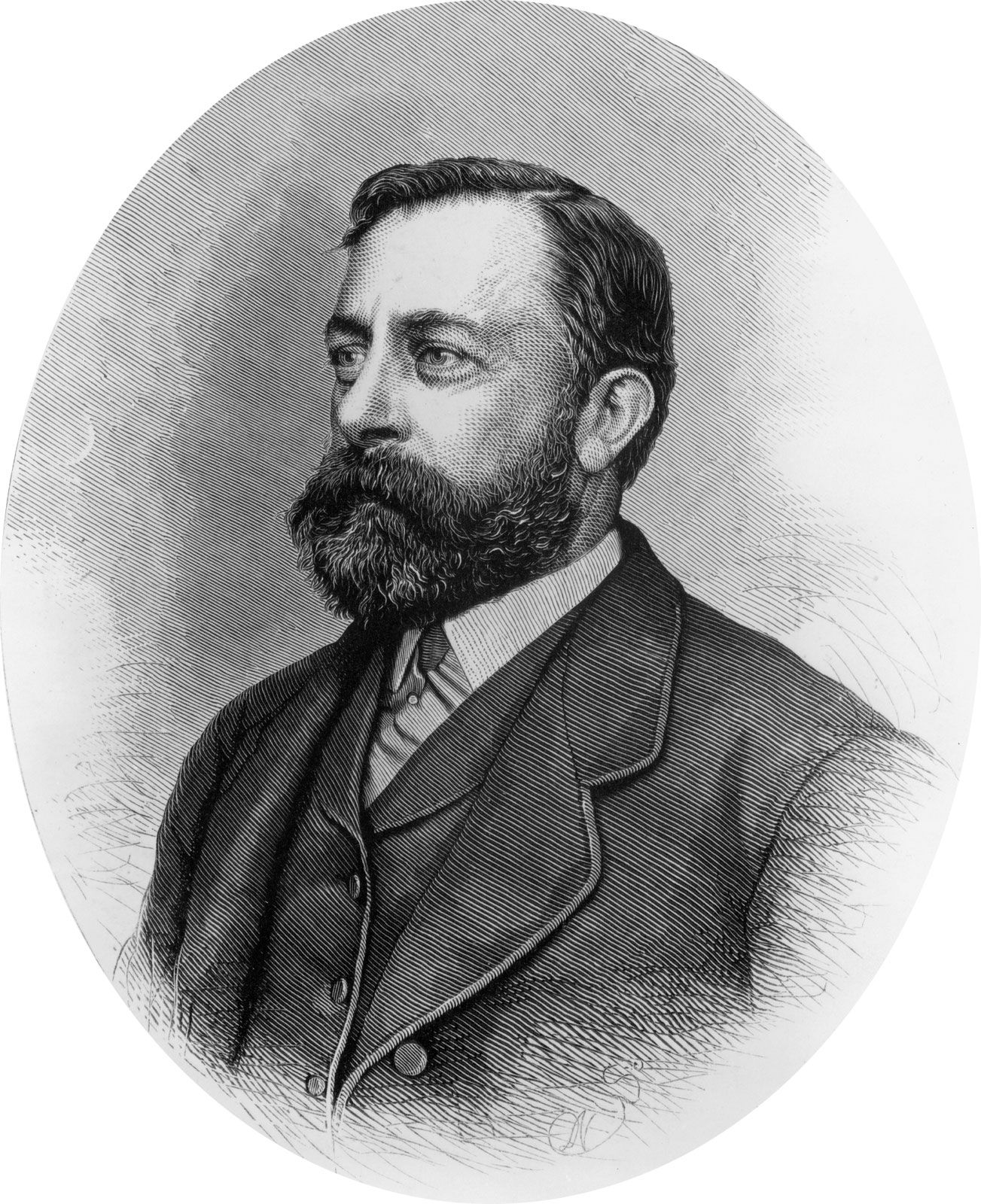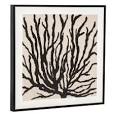Exploring Edward Hopper’s “Nighthawks”
Edward Hopper’s iconic painting “Nighthawks” is a masterpiece that continues to captivate art enthusiasts and critics alike. Created in 1942, this timeless work of art showcases Hopper’s mastery of light, shadow, and atmosphere.
The scene depicted in “Nighthawks” is set in a late-night diner, with four individuals sitting at the counter or in booths. The stark lighting and lack of exterior view create a sense of isolation and introspection among the figures, evoking a feeling of urban alienation.
Hopper’s use of color and composition adds depth and complexity to the painting. The contrast between the bright interior lights and the dark exterior creates a sense of tension and mystery. The angular shapes of the diner’s architecture enhance the feeling of confinement within the urban landscape.
One cannot help but be drawn into the narrative suggested by “Nighthawks.” The silent interaction between the figures, their body language, and expressions invite viewers to speculate about their stories and relationships. Are they strangers sharing a moment of solitude in the bustling city, or are they connected in ways unseen?
Edward Hopper’s ability to capture human emotion and experience through his art is evident in “Nighthawks.” The painting transcends its time period to resonate with audiences across generations, inviting contemplation on themes of loneliness, connection, and modernity.
As we gaze upon “Nighthawks,” we are reminded of the power of art to evoke emotions, provoke thought, and spark conversations about the human condition. Edward Hopper’s enduring legacy lives on through this evocative masterpiece that continues to inspire and intrigue art lovers worldwide.
Decoding Edward Hopper’s ‘Nighthawks’: 8 Insights into Urban Isolation and Artistic Mastery
- Edward Hopper’s ‘Nighthawks’ is a famous painting depicting a scene in a downtown diner late at night.
- The painting showcases Hopper’s signature style of capturing urban loneliness and isolation.
- Notice the use of strong contrasts between light and shadow in ‘Nighthawks’ to create a sense of mystery and drama.
- Pay attention to the lack of an exterior view in the painting, emphasizing the feeling of confinement and solitude.
- Study the body language and facial expressions of the figures in ‘Nighthawks’ to interpret their emotions and relationships.
- Explore how Hopper uses color, especially the vibrant reds and greens, to draw attention to certain elements in the composition.
- Consider the role of perspective in ‘Nighthawks’ which contributes to its sense of depth and spatial arrangement.
- Reflect on the overall mood evoked by ‘Nighthawks’ – a mix of nostalgia, alienation, and contemplation.
Edward Hopper’s ‘Nighthawks’ is a famous painting depicting a scene in a downtown diner late at night.
Edward Hopper’s renowned painting, “Nighthawks,” captures a striking scene within a downtown diner late at night. The iconic artwork showcases Hopper’s exceptional ability to convey a sense of urban solitude and contemplation through his masterful use of light and composition. The somber yet captivating atmosphere depicted in the painting draws viewers into a narrative that speaks to themes of isolation, connection, and the complexities of modern urban life. “Nighthawks” stands as a timeless representation of Hopper’s unique artistic vision and continues to intrigue and resonate with audiences worldwide.
The painting showcases Hopper’s signature style of capturing urban loneliness and isolation.
The tip on Edward Hopper’s “Nighthawks” highlights the painting’s profound representation of Hopper’s distinctive style in capturing urban loneliness and isolation. Through his masterful use of light, shadow, and composition, Hopper conveys a sense of solitude and introspection among the figures in the late-night diner. The stark contrast between the bright interior lights and the dark exterior, coupled with the characters’ subdued interactions, creates a poignant narrative that resonates with themes of urban alienation. Hopper’s ability to evoke complex emotions through his artistry is evident in “Nighthawks,” making it a timeless masterpiece that continues to fascinate viewers with its exploration of human experience in an urban setting.
Notice the use of strong contrasts between light and shadow in ‘Nighthawks’ to create a sense of mystery and drama.
In Edward Hopper’s masterpiece “Nighthawks,” the deliberate use of strong contrasts between light and shadow plays a pivotal role in shaping the painting’s atmosphere of mystery and drama. The stark interplay of light and darkness not only highlights the physical space of the late-night diner but also intensifies the emotional depth of the scene. The strategic placement of shadows and illumination adds a layer of intrigue, inviting viewers to immerse themselves in the enigmatic narrative unfolding within the confined space. Through these contrasting elements, Hopper masterfully infuses “Nighthawks” with a sense of tension and ambiguity that captivates and intrigues observers, making it a timeless work of art that continues to resonate with audiences today.
Pay attention to the lack of an exterior view in the painting, emphasizing the feeling of confinement and solitude.
In Edward Hopper’s “Nighthawks,” the deliberate absence of an exterior view within the painting plays a crucial role in intensifying the sense of confinement and solitude experienced by the characters. The enclosed space of the late-night diner, devoid of any glimpse into the outside world, creates a claustrophobic atmosphere that heightens the feeling of isolation among the figures. This artistic choice by Hopper not only emphasizes the characters’ detachment from the external environment but also underscores their internal struggles and emotional states, inviting viewers to delve deeper into the themes of urban alienation and introspection portrayed in this iconic artwork.
Study the body language and facial expressions of the figures in ‘Nighthawks’ to interpret their emotions and relationships.
To fully appreciate Edward Hopper’s masterpiece “Nighthawks,” it is essential to study the body language and facial expressions of the figures depicted in the painting. By closely examining their gestures and interactions, viewers can interpret the emotions and relationships among the characters within the scene. The subtle cues conveyed through their posture, gaze, and expressions offer insights into their inner thoughts and connections, inviting us to delve deeper into the narrative of urban isolation and human connection that Hopper skillfully portrays in this iconic artwork.
Explore how Hopper uses color, especially the vibrant reds and greens, to draw attention to certain elements in the composition.
In Edward Hopper’s “Nighthawks,” a keen exploration of color reveals the artist’s deliberate use of vibrant reds and greens to draw attention to specific elements within the composition. The striking contrast between these bold hues against the muted tones of the diner’s interior creates a focal point that commands the viewer’s gaze. The strategic placement of reds and greens not only adds visual interest but also conveys a sense of tension and intensity in this nocturnal scene. Hopper’s masterful manipulation of color invites us to delve deeper into the narrative of “Nighthawks” and appreciate how subtle nuances in color can enhance the overall impact of a work of art.
Consider the role of perspective in ‘Nighthawks’ which contributes to its sense of depth and spatial arrangement.
In Edward Hopper’s masterpiece “Nighthawks,” the role of perspective plays a crucial part in enhancing the painting’s sense of depth and spatial arrangement. The carefully crafted perspective draws the viewer into the scene, creating a feeling of immersion within the late-night diner setting. The converging lines and angles lead the eye towards the central figures, emphasizing their isolation amidst the urban landscape. Hopper’s meticulous attention to perspective not only adds visual interest but also reinforces the underlying themes of loneliness and introspection portrayed in “Nighthawks.”
Reflect on the overall mood evoked by ‘Nighthawks’ – a mix of nostalgia, alienation, and contemplation.
Reflecting on the overall mood evoked by Edward Hopper’s “Nighthawks,” one is enveloped in a mix of nostalgia, alienation, and contemplation. The painting’s subdued lighting, empty streets outside, and the solitary figures within the diner create a sense of longing for a bygone era while also highlighting the isolation that can be felt in a bustling city. The characters’ lack of interaction with one another adds to the feeling of detachment, prompting viewers to ponder on themes of human connection and urban anonymity. Through its evocative atmosphere, “Nighthawks” invites us to delve into our own emotions and reflections, stirring a complex blend of sentiments that linger long after we gaze upon this iconic work of art.




